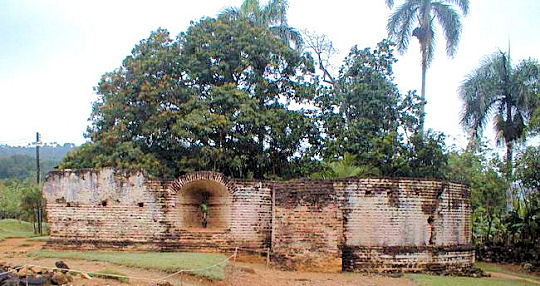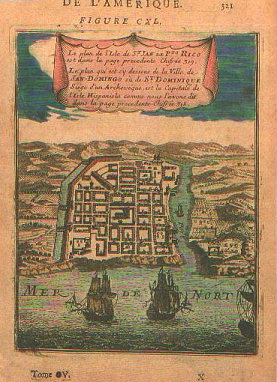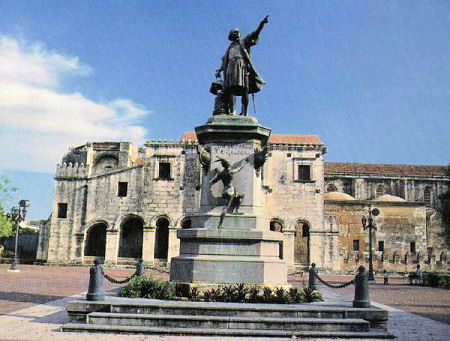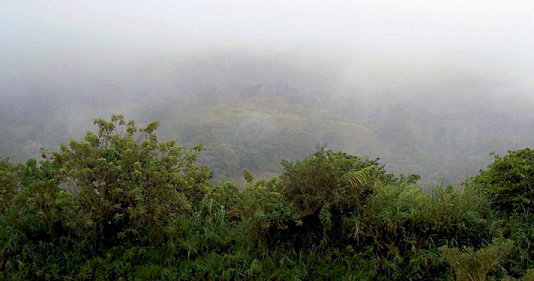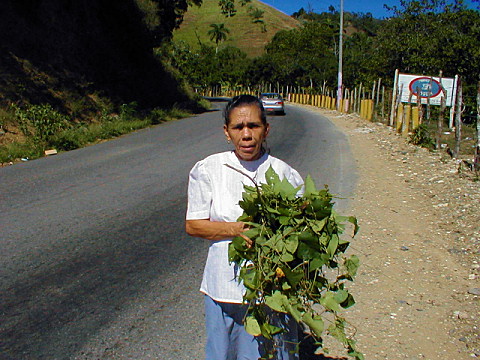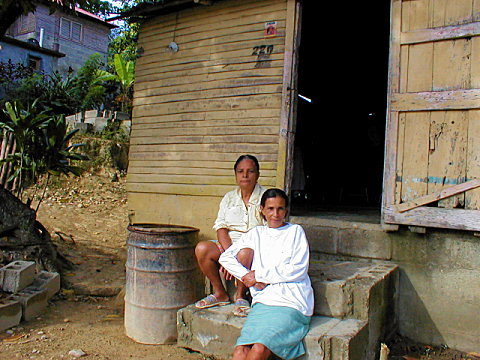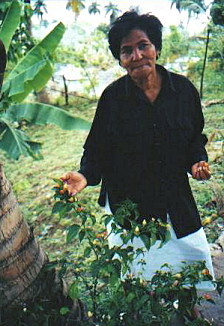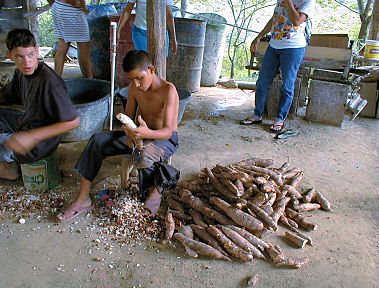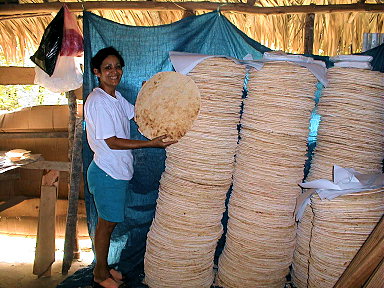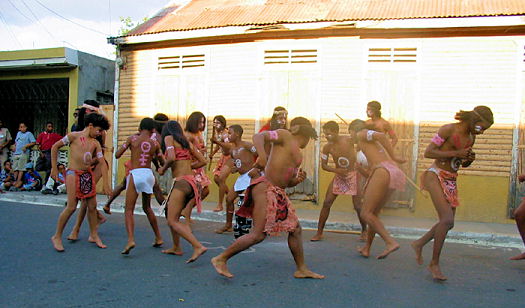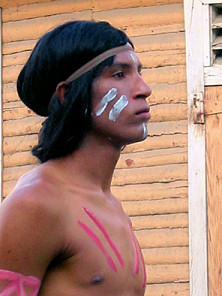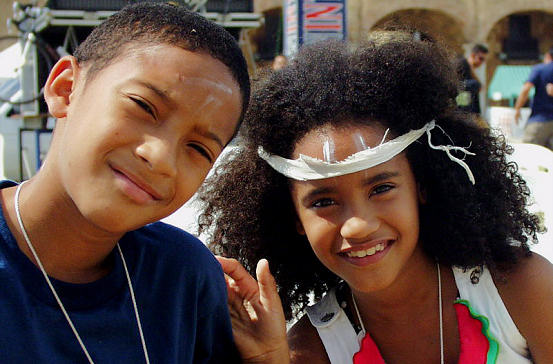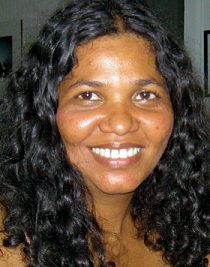











DOMINICAN
REPUBLIC

Indigenous Resurgence in the Contemporary Caribbean: Amerindian Survival and Revival. Edited by Maximilian C. Forte. Published by Peter Lang, New York, 2006
Contributor: Jorge Estevez, a Taíno from the Dominican Republic, is Participant Coordinator of Public Programs at the Smithsonian National Museum of the American Indian in New York. Estevez’s contact information is one of the first passed on by those “in the know” to anyone who is seriously interested in research about the Taíno or, better said, to anyone who has any questions at all about the Taíno of the past or present. Estevez gives dozens of presentations about the Taíno and their culture each year to school groups in the state of New York and abroad as a special lecturer, including a visit to the Dominican Republic in 2003 to address an educational conference on indigenous revival. He is a frequent contributor to the Smithsonian Museum’s magazine, and has written for Native Peoples as well as for the soon-to-be-published Encyclopedia of Caribbean Religions. He is also an editor with the Caribbean Amerindian Centrelink (www.centrelink.org) and a member of the editorial board of Kacike: The Journal of Caribbean Amerindian History and Anthropology (www.kacike.org).
Contributor: Pedro J. Ferbel-Azcarate earned his PhD in Interdisciplinary Archaeology from the University of Minnesota in Minneapolis; a master’s in Anthropology/Archaeology from the University of South Carolina; and a BA in Psychology from the University of Michigan. He is an interdisciplinary archaeologist, an independent scholar affiliated with the Archivo Histórico de Santiago, Dominican Republic, and currently teaches in the Department of Black Studies at Portland State University, Oregon. A dynamic speaker, Ferbel-Azcarate has presented talks and directed workshops on the Taíno, archaeology, anthropology, and related topics at different venues in the US, the Dominican Republic, and Cuba. For four years he was the director and principal field researcher, project coordinator, instructor, advisor, public speaker, and curator for historical and cultural projects at the public archives of Santiago, Dominican Republic. He has published articles in La Información and El Siglo newspapers, in Acta Americana and the Boletín of the Museo del Hombre Dominicano, and is coauthor of The Practice of Colonial Archaeology in the Dominican Republic and The Ancient Caribbean: Research Guides to Ancient Civilizations. Ferbel-Azcarate is an editor with the Caribbean Amerindian Centrelink (www.centrelink.org) and a member of the editorial board of Kacike: The Journal of Caribbean Amerindian History and Anthropology (www.kacike.org).
Contributor: Lynne Guitar, a Fulbright Fellow, earned her PhD in History and Anthropology from Vanderbilt University in Nashville, Tennessee, as well as a Master’s in history from Vanderbilt, and two BA’s from Michigan State University (one in history and the other in anthropology). She is an independent historian and anthropologist in Santo Domingo, Dominican Republic. She has taught at El Colegio Americano de Santo Domingo, guiding educational tours, and writing two series of books about the Taíno, one for children and one for adults, among other diverse projects. She is currently the Resident Director of the Council on International Education Exchange’s program in Spanish and Caribbean Studies at Pontificia Universidad Catolica Madre y Maestra in Santiago de los Caballeros, Dominican Republic. She is an editor with the Caribbean Amerindian Centrelink (www.centrelink.org) and a member of the editorial board of Kacike: The Journal of Caribbean Amerindian History and Anthropology (www.kacike.org), where she has also served as the guest editor of an immensely popular special issue on “New Directions in Taíno Research.” Guitar is a gifted lecturer, who has spoken on the Taíno and Dominican popular culture across the US, in Europe, the Dominican Republic, Jamaica, Martinique, and Mexico. Her publications include articles on the Taíno and Dominican history and culture for a wide variety of encyclopedias, for an upcoming collection edited by Jane Landers titled Slaves, Subjects, and Subversives: Blacks in Colonial Latin America, to be published by the University of New Mexico Press, in Native Peoples, and academic journals including the Boletín of the Museo del Hombre Dominicano, Revista Interamericana, Ethnohistory, and Colonial Latin American Historical Review. Guitar and her work were recently spotlighted in Deep Sea Detectives, a documentary aired on the History Channel.
Chapter: Chapter Three. Ocama-Daca Taíno (Hear Me, I Am Taíno): Taíno Survival on Hispaniola, Focusing on the Dominican Republic
Abstract:
The island of Hispaniola, shared by the Dominican Republic and the Republic of Haiti, was the heart of the flourishing Taíno culture that, by the 1490s, encompassed most of the Greater Antilles region. It was also on Hispaniola, arising in the first half of the 16th century, that the myth of Taíno extinction began. The most prevalent reason for the creation of this myth was the campaign of the Dominican friars, led by Bartolomé de las Casas, to abolish the encomienda system and replace it with a mission system for the conversion of the Native Peoples. Further, a myth of Taíno extinction provided the Spanish Crown with a perfect cover-up, concealing its inability to exert absolute control over the resisting Taínos. Finally, Taíno extinction provided a rationale for those colonists who benefited from the importation of African people as slaves. Over the years, the extinction myth was transformed in multiple ways to suit national and class interests, which helps explain its tenaciousness in the Dominican ethos. After centuries of unquestioning acceptance of Taíno extinction, some scholars are beginning to challenge the assumption. Indeed, recent historical, ethnographic, ethno-archaeological, linguistic, and DNA studies are demonstrating multidisciplinary evidence for both Taíno cultural and biological survival. This chapter examines the new evidence and takes an in-depth look at the paradoxical situation of today’s Dominican Taínos. While their fellow Dominicans value the pre-Columbian Taíno cultural heritage, they disclaim the existence of Taíno descendants. This is partly because so many authorities over the centuries have perpetuated the myth of Taíno extinction, and partly because complex questions about ethnicity aggravate the already problematical areas of “race” and identity in this politically and economically troubled nation. Ironically, but understandably, the various Taíno revival movements began in Puerto Rico and in the U.S.A. among Taínos of the diaspora. Hopes are that, with the weight of all the new evidence—which sparks yet more new studies—the revival is approaching a critical mass and Taíno survival will soon be recognized in the original Taíno homeland.
Photo Gallery by the Contributors
|
Colonial History
Dominicans living in rural settings: places of Taíno cultural survival and zones of Afro-Taíno-Spanish transculturation
Marking Taíno Heritage
|
Websites on the Taínos of the Dominican Republic:
A Chronology of Taíno Cultural and Biological Survival, by Jorge Estevez
The Taíno and their Use of Caves, by Lynne Guitar
Criollos: the Birth of a Dynamic new Indo-Afro-European People and Culture on Hispaniola, by Lynne Guitar, KACIKE: The Journal of Caribbean Amerindian History and Anthropology
NEW DIRECTIONS IN TAÍNO RESEARCH: special issue of KACIKE: The Journal of Caribbean Amerindian History and Anthropology
The Origin and Survival of the Taíno Language, by David Wahayona Campos
The Return of the Taínos/ Our Own "Lost Tribe" by Richard Kearns
The Official Academic Story - Extinct but with Influence by Richard Kearns
Restoration and Outreach/ Conversations with La Nación Taína in New York by Richard Kearns
Messages from the Taíno Restoration and Truth Reclamation/ We Never Disappeared by Richard Kearns
Nación Taína: Recovery and Restoration of the Culture by Richard Kearns
The Taínos of the Dominican Republic: Caribbean Amerindian Centrelink
